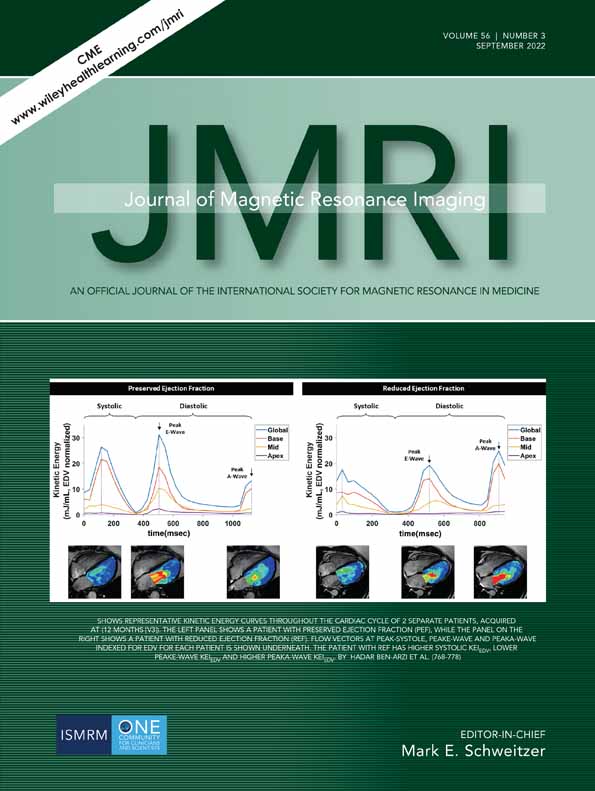Cerebrovascular Effects of Lower Body Negative Pressure at 3T MRI: Implications for Long-Duration Space Travel
Abstract
Background
Optic disc edema develops in most astronauts during long-duration spaceflight. It is hypothesized to result from weightlessness-induced venous congestion of the head and neck and is an unresolved health risk of space travel.
Purpose
Determine if short-term application of lower body negative pressure (LBNP) could reduce internal jugular vein (IJV) expansion associated with the supine posture without negatively impacting cerebral perfusion or causing IJV flow stasis.
Study Type
Prospective.
Subjects
Nine healthy volunteers (six women).
Field Strength/Sequence
3T/cine two-dimensional phase-contrast gradient echo; pseudo-continuous arterial spin labeling single-shot gradient echo echo-planar.
Assessment
The study was performed with two sequential conditions in randomized order: supine posture and supine posture with 25 mmHg LBNP (LBNP25). LBNP was achieved by enclosing the lower extremities in a semi-airtight acrylic chamber connected to a vacuum. Heart rate, bulk cerebrovasculature flow, IJV cross-sectional area, fractional IJV outflow relative to arterial inflow, and cerebral perfusion were assessed in each condition.
Statistical Tests
Paired t-tests were used to compare measurement means across conditions. Significance was defined as P < 0.05.
Results
LBNP25 significantly increased heart rate from 64 ± 9 to 71 ± 8 beats per minute and significantly decreased IJV cross-sectional area, IJV outflow fraction, cerebral arterial flow rate, and cerebral arterial stroke volume from 1.28 ± 0.64 to 0.56 ± 0.31 cm2, 0.75 ± 0.20 to 0.66 ± 0.28, 780 ± 154 to 708 ± 137 mL/min and 12.2 ± 2.8 to 9.7 ± 1.7 mL/cycle, respectively. During LBNP25, there was no significant change in gray or white matter cerebral perfusion (P = 0.26 and P = 0.24 respectively) and IJV absolute mean peak flow velocity remained ≥4 cm/sec in all subjects.
Data Conclusion
Short-term application of LBNP25 reduced IJV expansion without decreasing cerebral perfusion or inducing IJV flow stasis.
Level of Evidence
1
Technical Efficacy Stage
1




